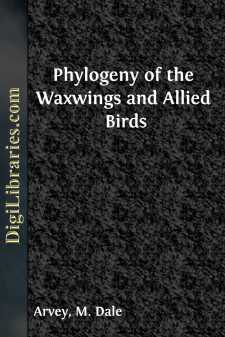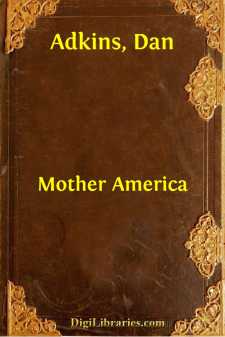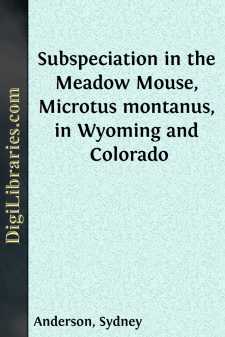Categories
- Antiques & Collectibles 13
- Architecture 36
- Art 48
- Bibles 22
- Biography & Autobiography 813
- Body, Mind & Spirit 142
- Business & Economics 28
- Children's Books 17
- Children's Fiction 14
- Computers 4
- Cooking 94
- Crafts & Hobbies 4
- Drama 346
- Education 46
- Family & Relationships 57
- Fiction 11829
- Games 19
- Gardening 17
- Health & Fitness 34
- History 1377
- House & Home 1
- Humor 147
- Juvenile Fiction 1873
- Juvenile Nonfiction 202
- Language Arts & Disciplines 88
- Law 16
- Literary Collections 686
- Literary Criticism 179
- Mathematics 13
- Medical 41
- Music 40
- Nature 179
- Non-Classifiable 1768
- Performing Arts 7
- Periodicals 1453
- Philosophy 64
- Photography 2
- Poetry 896
- Political Science 203
- Psychology 42
- Reference 154
- Religion 513
- Science 126
- Self-Help 84
- Social Science 81
- Sports & Recreation 34
- Study Aids 3
- Technology & Engineering 59
- Transportation 23
- Travel 463
- True Crime 29
Phylogeny of the Waxwings and Allied Birds
by: M. Dale Arvey
Description:
Excerpt
INTRODUCTIONA small family of passerine birds, the Bombycillidae, has been selected for analysis in the present paper. By comparative study of coloration, nesting, food habits, skeleton and soft parts, an attempt is made to determine which of the differences and similarities between species are the result of habits within relatively recent geological time, and which differences are the result of inheritance from ancient ancestral stocks, which were in the distant past morphologically different. On the basis of this information, an attempt is made to ascertain the natural relationships of these birds. Previous workers have assigned waxwings alone to the family Bombycillidae, and a question to be determined in the present study is whether or not additional kinds of birds should be included in the family.
It has generally been assumed that the nomadic waxwings originated under boreal conditions, in their present breeding range, and that they did not undergo much adaptive radiation but remained genetically homogeneous. Also it is assumed that the species were wide ranging and thus did not become isolated geographically to the extent that, say, the Fringillidae did. The assumption that waxwings originated in the northern part of North America or Eurasia may be correct, but it is more probable that the origin was more southerly, perhaps, in northern Mexico, of North America (
) Subsequent to the differentiation of this stock in the south, there was a northerly movement, while certain populations remained behind and underwent an evolution different from the northern group. Since the fossil record does not permit us to say when in geological time the family originated, we must rely on anatomical evidence and the distributional evidence of present-day species to estimate when the family stock had diverged from some unknown group sufficiently to merit the status of a separate family.
ACKNOWLEDGMENTS
It is with pleasure that I acknowledge the guidance received in this study from Professor E. Raymond Hall of the University of Kansas. I am indebted also to Dr. Herbert Friedmann of the United States National Museum for the loan of certain skins, skeletons, and alcoholic material; to Mr. Alexander Skutch, for notes on certain Central American birds; and to Dr. Henry W. Setzer, Mr. George H. Lowery, Jr., Mr. Victor E. Jones, Mr. Victor Housholder, Mr. Alvaro Wille-Trejos, and Mr. Morton F. Davis, for gifts of specimens that have been used in this work. Suggestions and critical comments from Professors Worthie H. Horr, Charles G. Sibley and Edward H. Taylor are gratefully acknowledged. I wish also to thank Mrs. Virginia Unruh for the preparation of the drawings used in this work.
NOMENCLATURAL HISTORY
The oldest name available for any species of the waxwings is Lanius garrulus Linnaeus (1758). Lanius garrulus and Lanius garrulus variety B carolinensis were described as conspecific. The description has been associated with the first of the two names. The latter name is a nomen nudum since it was not accompanied by a separate description....









